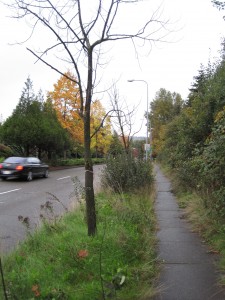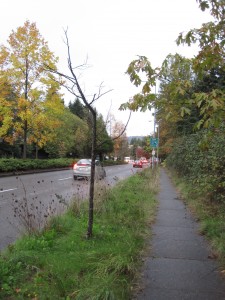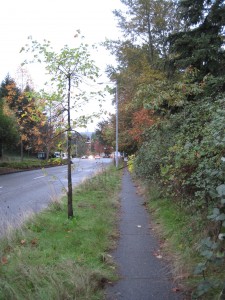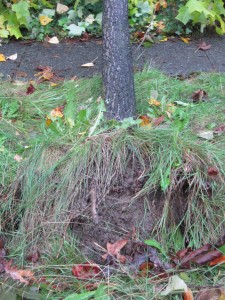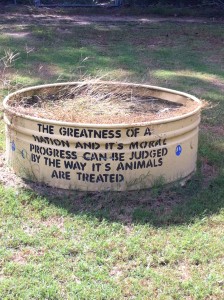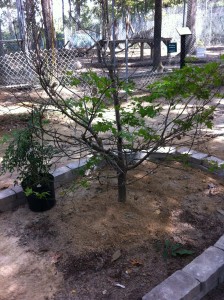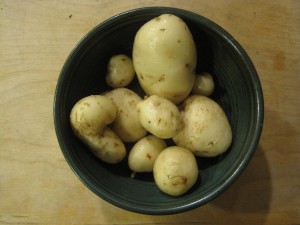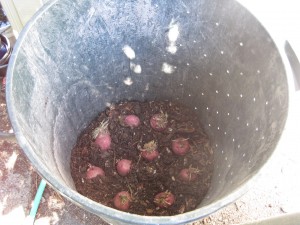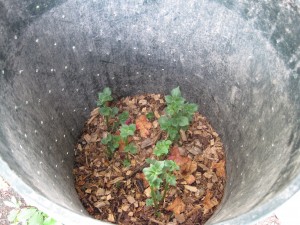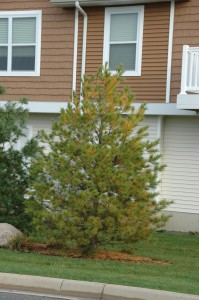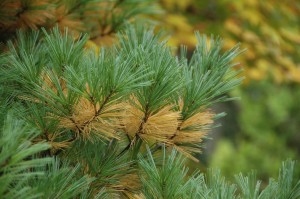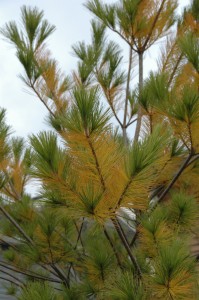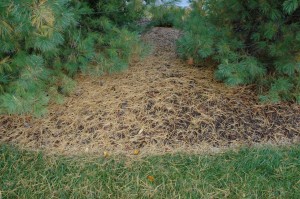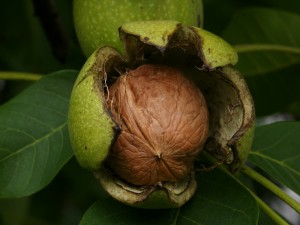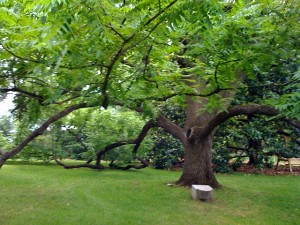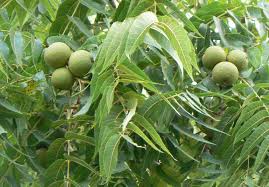Those of you that have followed the blog for a while know that poor tree planting is one of my pet peeves. It drives me crazy to watch tree installers use backhoes to gouge out gigantic holes and then drop in the intact root ball, clay, burlap, twine and all. But this dig-and-dump method (or “cost effective practice” according to installers) of installing trees often dooms them (the trees, not the installers) to a slow and ugly death. So in honor of Halloween, let me share my latest horror story.
Twice a day I drive down this street in NE Seattle. I’ve long admired the row of dead street trees left to remind us all of our own mortality. A few of these Liriodendron have somehow survived though “survival” seems a generous term. They’re more like zombies, slowly losing body parts but somehow still functioning until someone puts them out of their misery.
One lone tree seemed to defy all odds. Until our latest windstorm, which revealed the cause of all this arboricultural agony.
That’s right, there’s the clay-covered rootball, still intact. Only one root has managed to escape into the native soil. There may be others on the opposite side, but by now (several years after installation) there should have been sufficient root establishment to prevent failure.
Several of us have written about bare-rooting trees before, and while there’s still not consensus on the practice I think we would all agree that the tree planting in this case was not acceptable. There are better ways, and yes they take more time (or “not cost effective” according to installers), but planting trees right mean fewer replacements later.
